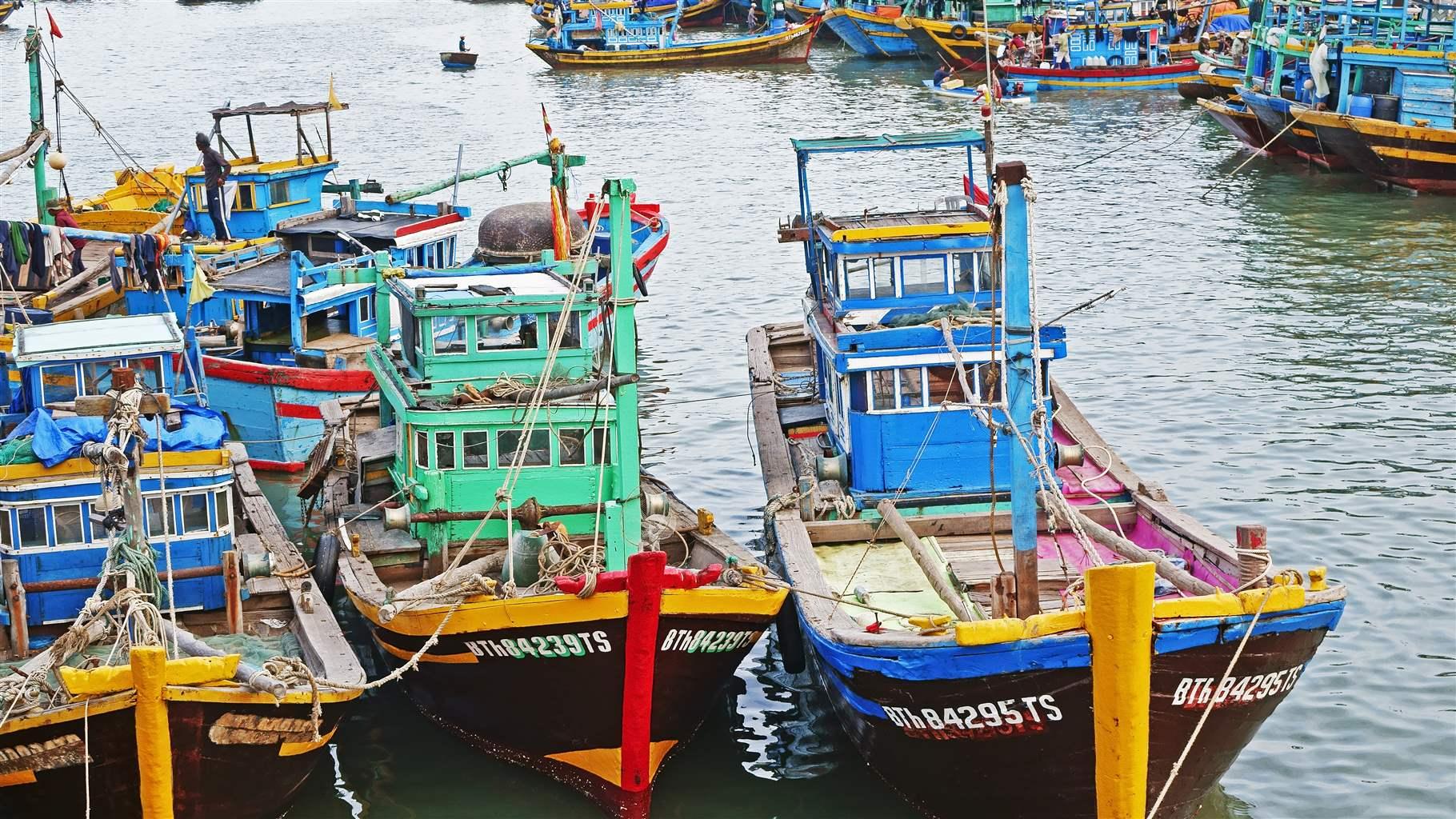New Tool Helps Seafood Businesses Fight Illegal Fishing
Users can verify source of fish—and hold suppliers to fair labor standards

In a global seafood market where consumers are increasingly concerned about sustainability, wholesalers and retailers need sharper tools to help ensure that the fish they sell was responsibly—and legally—caught. This is especially important given that illegal, unreported and unregulated (IUU) fishing costs the global economy up to $23.5 billion annually in lost revenue and jobs while threatening food security and livelihoods and skewing scientific fishery assessments.
Those conditions were the impetus behind a 2017 code of practice to help the seafood industry verify the sources of the products it sells, and now that code will be even more effective thanks to the release of an accompanying implementation toolkit.
The 2017 publicly available specification—PAS 1550: 2017—was developed by The Pew Charitable Trusts in collaboration with the Environmental Justice Foundation, Oceana and the World Wide Fund for Nature (WWF) with support from Oceans 5 and the seafood industry.
The recently launched PAS toolkit includes free access to the specification (which formerly required a fee to access) and an implementation guide with easy-to-use flow diagrams that demonstrate, for example, how to trace seafood back to its origin. Together, the specification and toolkit provide recommendations to seafood buyers and companies, and guidance for exercising due diligence and undertaking risk assessments to minimize the risk of illegally caught seafood entering their supply chains.
The role of seafood markets to mitigate risks in the supply chain
The seafood industry and marketplace continue to face multiple challenges in ensuring that seafood is legally, ethically and sustainably sourced from point of catch to consumption. PAS was originally developed to address the risks that importers and processors of seafood and marine ingredients—such as the fish-meal used in animal feed—need to consider when implementing the requirements of the European Union Council Regulation (EC) No. 1005/2008. This regulation came into force in 2010 to help the EU—the world’s largest seafood importer—ensure that those imports were legally sourced. Over time, there was growing recognition within the seafood industry that although PAS was a comprehensive resource to guide IUU risk assessment, the demands it placed on users when assessing compliance were both complex and not always clear. In addition, until recently the PAS was available only in English—and required that users buy it.
To address these challenges, the PAS developers made the standard free and will be releasing translations in multiple languages in early 2022.
The new toolkit complements the PAS by walking retailers and seafood companies through three stages of implementation along the supply chain. The first stage is base practice, which establishes the framework that seafood companies need in place to communicate their intent to avoid IUU fishing in their supply chain and begin the risk assessment process as part of their due diligence. The second stage gives companies details on how to assess risk, improve risk mitigation and engage with government to improve policy and its implementation.
The third stage is aspirational and gives insight into what constitutes good practice once an IUU risk assessment process is established. Easy-to-use flow diagrams of different sections of PAS allow seafood companies to take deeper dives into specific aspects of vessel behaviour, traceability and labor conditions within the supply chain.
The PAS and toolkit are not the only aids available to seafood companies seeking to keep illegally caught fish out of their supply chains. To avoid confusion and redundancy with other products, guides and standards—including the Global Dialogue of Seafood Traceability 1.0, Global Seafood Alliance and Organización de Productores Asociados de Grandes Atuneros Congeladores—the PAS implementation guide makes note of areas of overlap. And although all these tools can help, companies must still conduct their own due diligence to reduce their chances of buying IUU seafood.
By stating in their seafood sourcing policies that they do not want IUU or labor abuse in their supply chains and routinely undertaking risk assessments using PAS, seafood buyers can ensure that they are not unwittingly perpetuating IUU fishing or the sale of illegally caught fish.
Kristine Beran is an officer with Pew’s international fisheries project and Huw Thomas is an independent consultant on seafood traceability.











